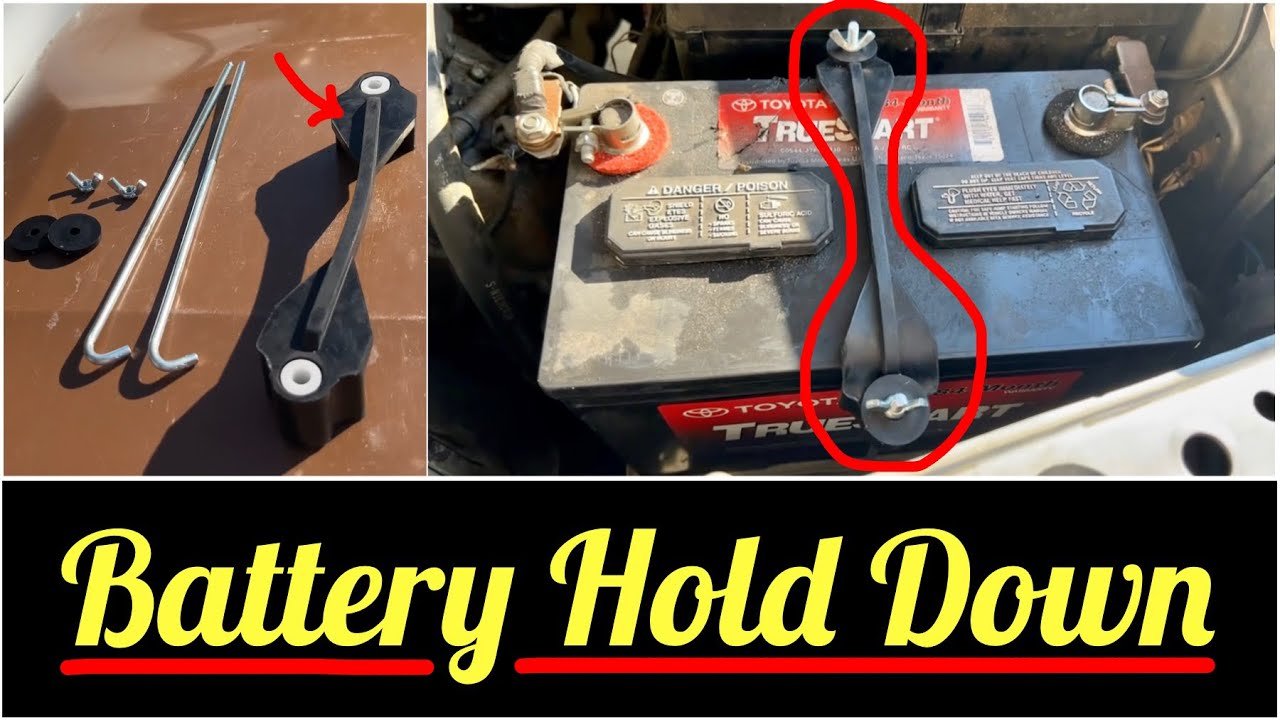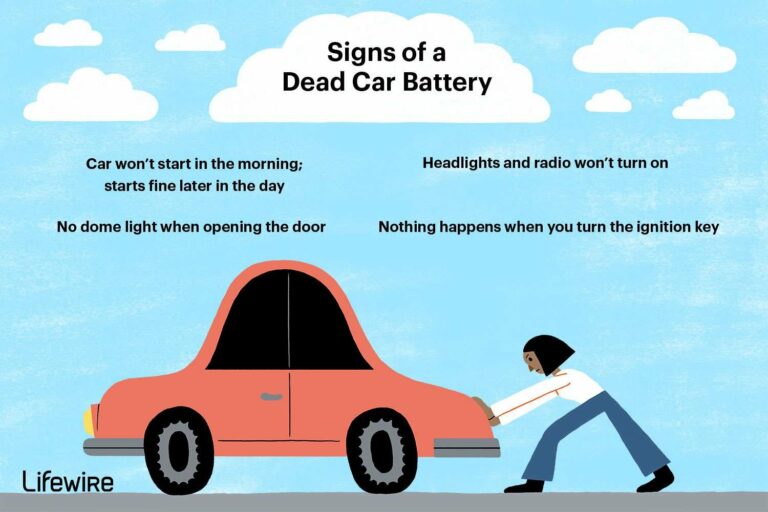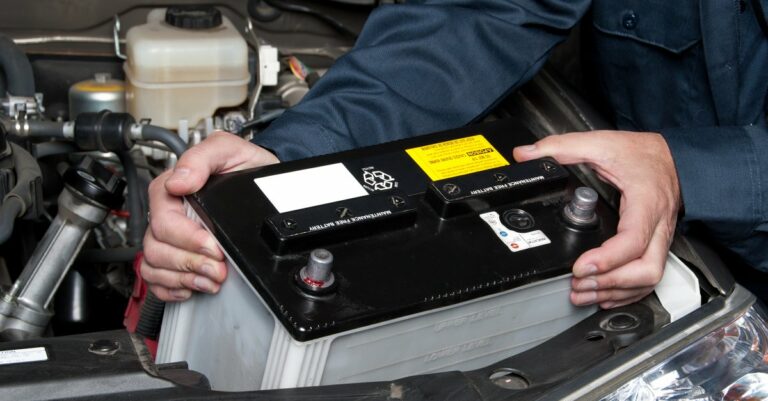How to Secure a Car Battery in Place?
Are you wondering How to Secure a Car Battery in Place? It’s essential to ensure that your car battery is securely fixed to prevent any unwanted movement or damage. In this article, we will walk you through the steps to safely secure your car battery, providing you with peace of mind on the road. So, let’s dive in and explore the simple yet effective ways to keep your car battery in place.
How to Secure a Car Battery in Place?
Securing a car battery properly is essential to ensure the safety and longevity of both the battery and the vehicle. A loose or improperly secured battery can lead to various issues, including damage to the battery, electrical system malfunctions, and even accidents caused by the battery sliding or shifting while driving. In this comprehensive guide, we will discuss the importance of securing a car battery and provide you with step-by-step instructions on how to do it effectively.
1. Understanding the Importance of Securing a Car Battery
Before we delve into the process of securing a car battery, let’s first understand why it is crucial to do so. Here are a few reasons why proper battery placement matters:
1.1 Stabilizes the Battery: Securing the battery in place prevents it from moving or vibrating excessively, which can cause internal damage and reduce its overall lifespan.
1.2 Protects Battery Terminals: A properly secured battery ensures the terminals stay in place and maintain a strong connection, reducing the risk of electrical issues or battery failure.
1.3 Prevents Short Circuits: Loose batteries can shift and come into contact with other metal parts or electrical components, leading to short circuits and potential damage to the vehicle’s electrical system.
1.4 Enhances Safety: When a battery is securely installed, it minimizes the chances of it dislodging during sudden stops or accidents, reducing the risk of injury to passengers or damage to the vehicle.
2. Gathering the Necessary Tools and Equipment
Before you begin securing your car battery, gather the following tools and equipment:
2.1 Socket or Wrench Set: You will need the appropriate socket or wrench size to loosen and tighten the battery terminal nuts.
2.2 Battery Hold-Down Bracket: Check if your vehicle already has a battery hold-down bracket. If not, you may need to purchase one that is compatible with your car’s make and model.
2.3 Battery Cleaner: It is always a good idea to clean the battery terminals and cables before securing them. A battery cleaner solution and a wire brush will come in handy for this task.
2.4 Safety Gear: To protect yourself, wear safety glasses and gloves while working with a car battery.
3. Preparing for the Battery Securing Process
Before securing the battery, take the following steps to prepare:
3.1 Park in a Safe Area: Ensure your vehicle is parked on a flat and stable surface away from traffic.
3.2 Turn Off the Engine: Switch off the engine, remove the key from the ignition, and engage the parking brake.
3.3 Identify the Battery Location: Locate the car battery under the hood. Refer to your vehicle’s manual if you are having trouble finding it.
4. Cleaning the Battery Terminals
Before securing the battery, clean the terminals and cables to ensure a good connection. Follow these steps:
4.1 Put on Safety Gear: Put on safety glasses and gloves to protect yourself from any corrosive residue.
4.2 Disconnect the Negative Terminal: Use a socket or wrench to loosen the nut on the negative (-) terminal. Once loose, remove the cable from the terminal and set it aside.
4.3 Disconnect the Positive Terminal: Repeat the process for the positive (+) terminal, ensuring the cables do not touch any metal parts or each other.
4.4 Clean the Terminals: Apply battery cleaner solution to a wire brush and scrub the battery terminals gently until they are free from dirt, corrosion, and rust. Wipe off any residue with a clean cloth.
4.5 Clean the Cable Ends: Use the wire brush to clean the cable ends as well, removing any corrosion or debris.
4.6 Reconnect the Terminals: Reconnect the positive terminal first, followed by the negative terminal. Ensure the connections are tight and secure.
5. Securing the Battery with a Hold-Down Bracket
If your vehicle does not have a battery hold-down bracket, follow these steps to install one:
5.1 Purchase a Compatible Hold-Down Bracket: Visit an auto parts store or check online for a battery hold-down bracket that is suitable for your car’s make and model.
5.2 Position the Bracket: Place the hold-down bracket over the battery, aligning it with the mounting holes on the battery tray.
5.3 Attach the Bracket: Insert the bracket straps through the mounting holes and secure them using the provided nuts, bolts, or screws. Tighten them enough to hold the battery firmly in place but avoid overtightening.
5.4 Verify the Battery Stability: Shake the battery gently to ensure it does not move or rattle inside the bracket. If it does, adjust the bracket accordingly.
6. Additional Steps for Battery Securing
Depending on your vehicle’s design and battery location, you may need to perform additional steps to secure the battery properly. Follow these guidelines:
6.1 Check Battery Restraint Devices: Some vehicles have built-in battery restraint devices or bars that keep the battery in place. Inspect these devices and ensure they are intact and functioning correctly.
6.2 Secure Loose Batteries: In certain vehicles, batteries may be positioned horizontally or at an angle, making them prone to sliding or shifting. In such cases, use foam blocks, battery wedges, or custom-made battery trays to secure the battery firmly.
6.3 Install Battery Tie-Downs: If your vehicle lacks a built-in battery restraint system, consider installing battery tie-downs or straps. These can be bought at auto parts stores and help secure the battery tightly.
7. Testing the Battery and Connections
Once you have secured the battery in place, perform the following tests to ensure everything is functioning correctly:
7.1 Battery Voltage Test: Use a multimeter or voltmeter to check the battery voltage. It should read around 12.6 volts for a fully charged battery.
7.2 Electrical System Check: Start the vehicle and test various electrical components, such as headlights, turn signals, and radio, to ensure they are functioning correctly. If you notice any issues, recheck the battery connections.
8. Regular Battery Maintenance
Securing your car battery is just one part of battery maintenance. To ensure its optimal performance and longevity, follow these tips:
8.1 Clean the Battery Terminals Regularly: Periodically check and clean the battery terminals and cable ends to prevent corrosion and ensure good electrical connections.
8.2 Inspect the Battery Hold-Down: Regularly inspect the battery hold-down bracket or straps to ensure they remain in good condition and properly secure the battery.
8.3 Monitor Battery Health: Keep an eye on the battery’s health by checking its voltage regularly and testing it if you notice any electrical issues.
8.4 Replace Old Batteries: If your battery is old or continuously struggles to hold a charge, consider replacing it to avoid future problems and potential breakdowns.
8.5 Seek Professional Assistance: If you are uncertain about securing the battery or notice any unusual signs, consult a professional mechanic for guidance and assistance.
Remember, properly securing your car battery not only ensures your vehicle operates smoothly but also reduces the risk of electrical problems and accidents. By following the steps outlined in this guide and regularly maintaining your battery, you can enjoy a reliable and hassle-free driving experience.
✅Battery Hold Down Kit | How to Secure Your Car or Truck Battery
Frequently Asked Questions
How do I secure a car battery in place?
Securing a car battery properly is important for preventing any damage or accidents. Here are the steps to secure a car battery:
What tools do I need to secure a car battery?
You will need a few basic tools to secure a car battery, including a wrench or socket set, battery hold-down brackets, J-bolts, and nuts.
Where is the car battery located in most vehicles?
In most vehicles, the car battery is located in the engine bay, often on one side near the front of the car.
How do I remove and replace a car battery?
To remove and replace a car battery, start by disconnecting the negative terminal followed by the positive terminal. Then, remove any brackets securing the battery and carefully lift it out. Reverse the process to install the new battery.
Can I secure a car battery without using hold-down brackets?
While it is recommended to use hold-down brackets to secure a car battery, if they are not available, you can use alternative methods such as bungee cords or straps to keep the battery in place.
What precautions should I take when securing a car battery?
When securing a car battery, make sure to wear protective gloves and eyewear. Double-check that all connections are tight and secure to prevent any electrical issues or battery movement.
Are there any specific torque settings to keep in mind when securing a car battery?
It is essential not to overtighten the hold-down brackets or terminal connections as this can damage the battery or its components. Refer to the manufacturer’s specifications for any specific torque settings.
Final Thoughts
securing a car battery in place is crucial for ensuring its safety and preventing potential damage or accidents. By following a few simple steps, such as using a battery bracket or strap, tightening the hold-down clamp, and protecting the terminals with covers, you can effectively secure the battery and maintain its stability. Regular maintenance, including checking for any signs of wear or corrosion, is also essential to keep the battery in optimal condition. By implementing these measures, you can ensure the longevity and reliability of your car battery, providing peace of mind and avoiding any unforeseen issues on the road.




